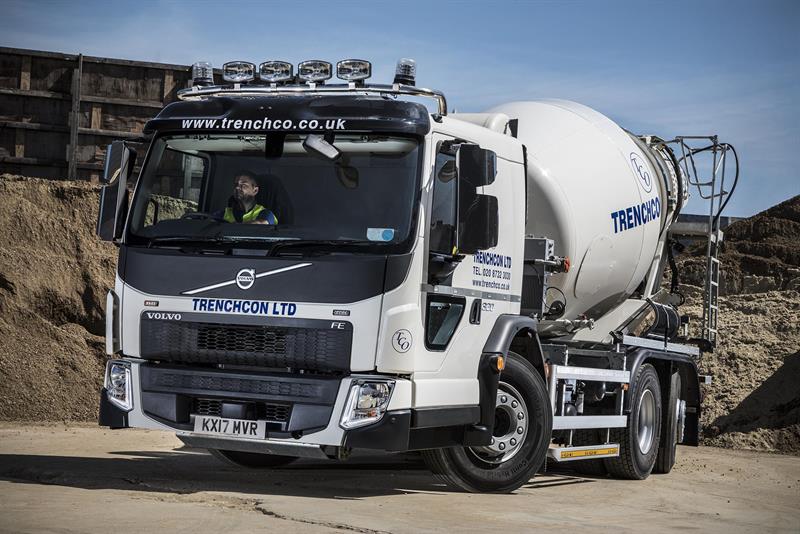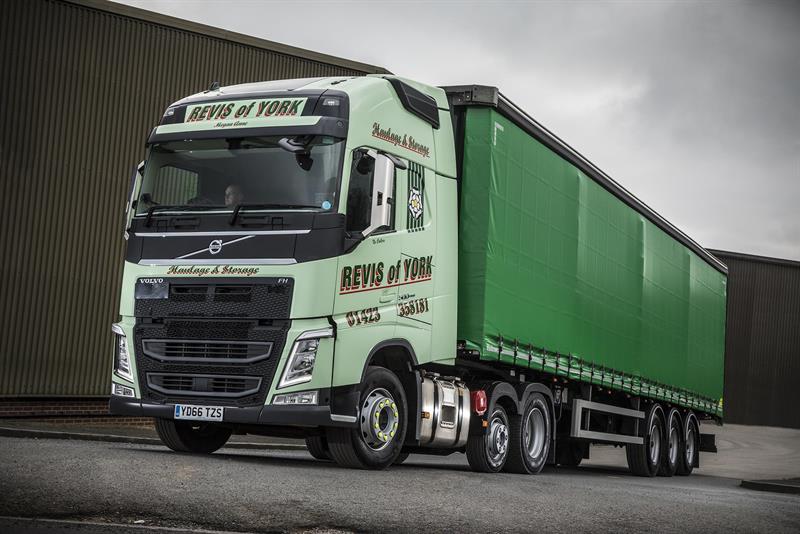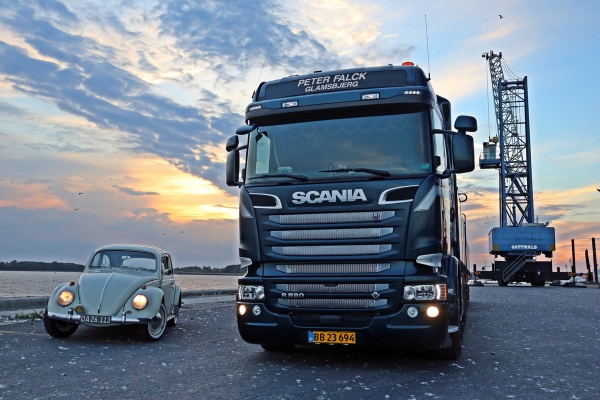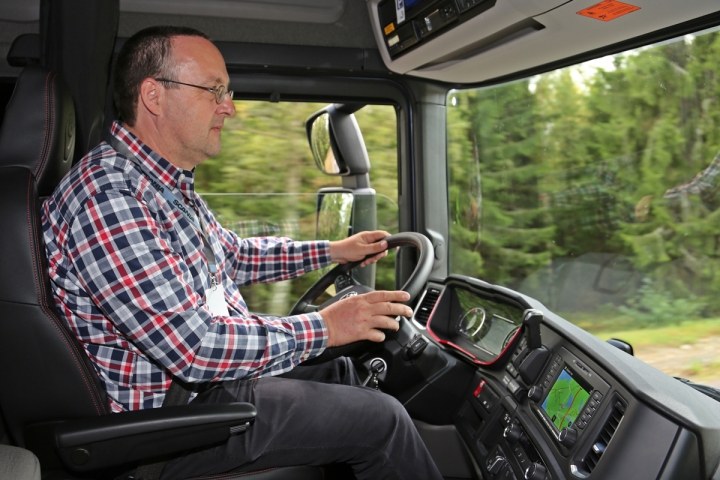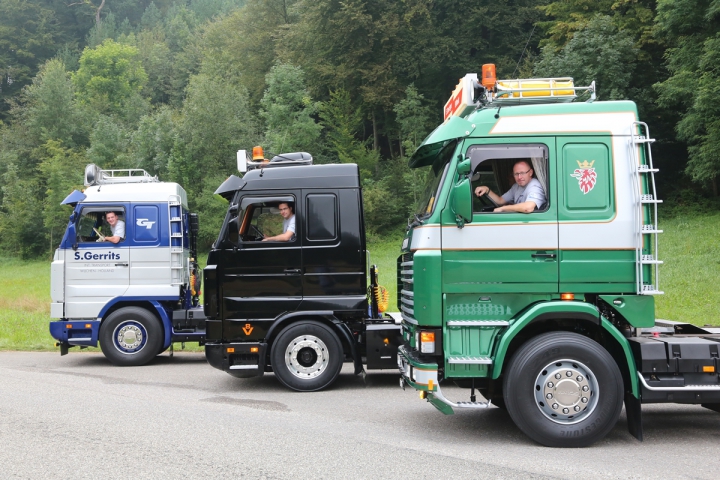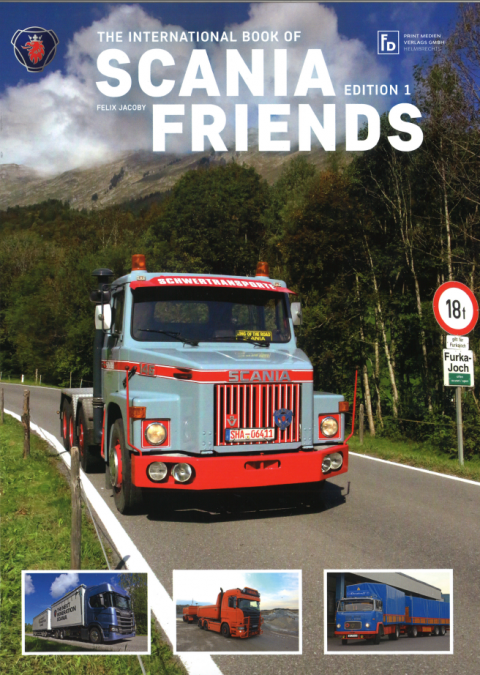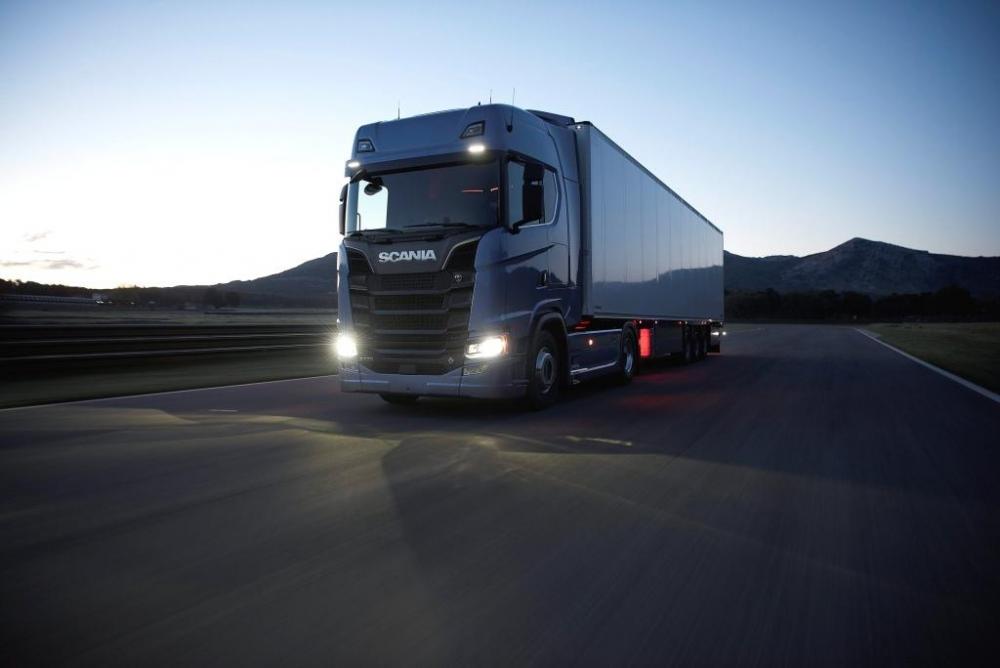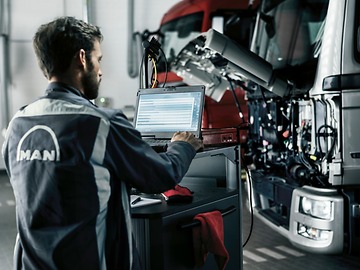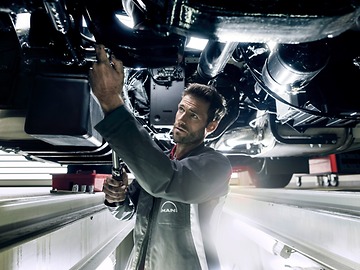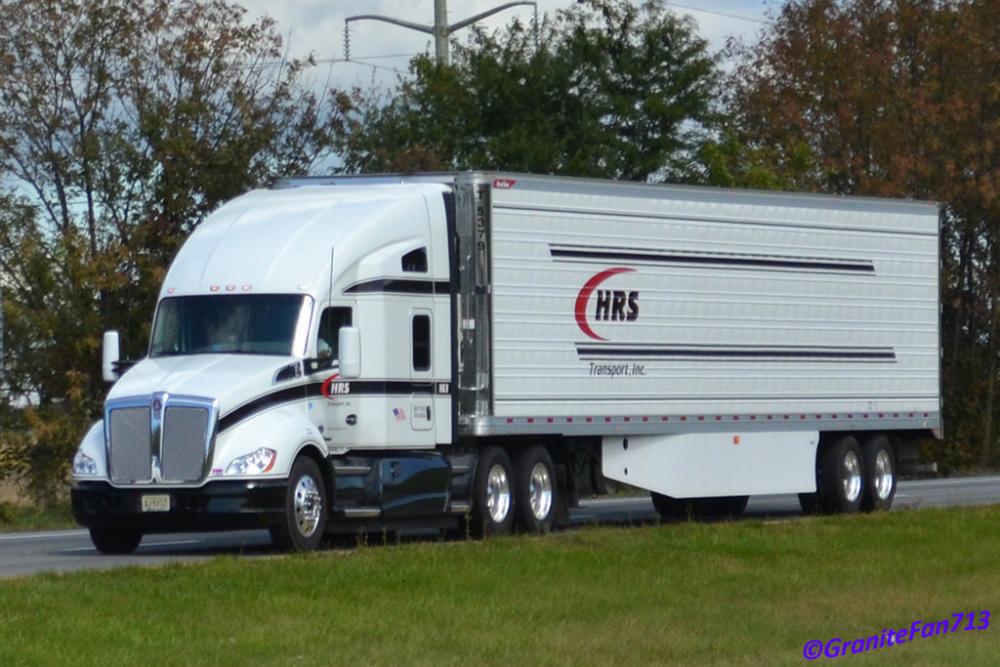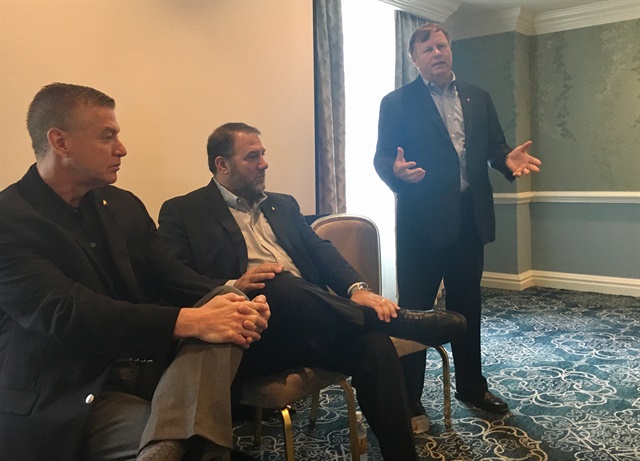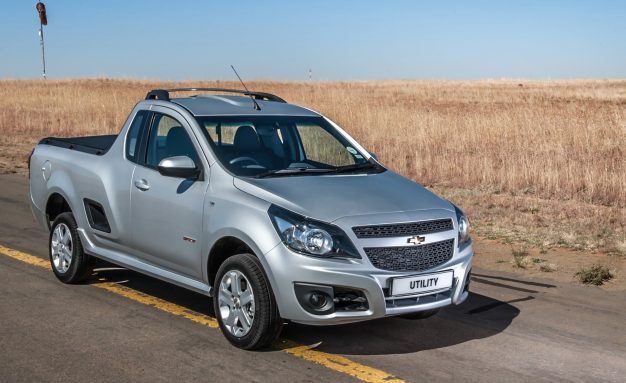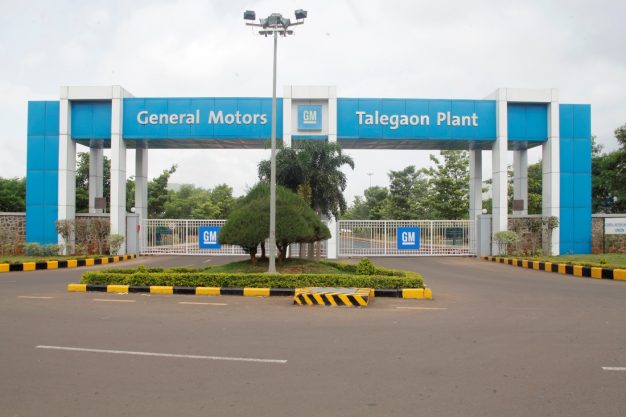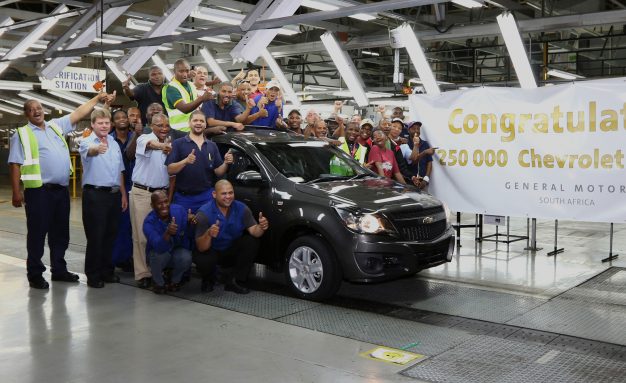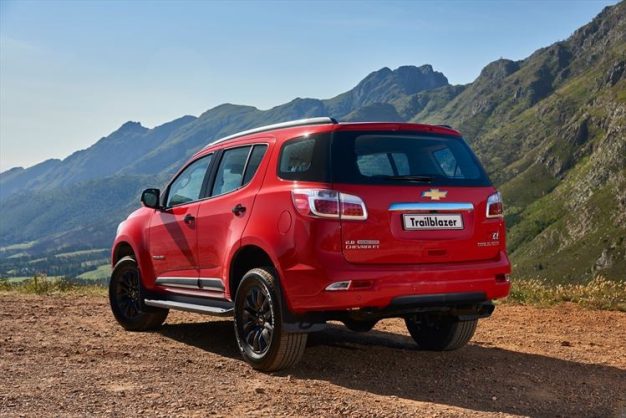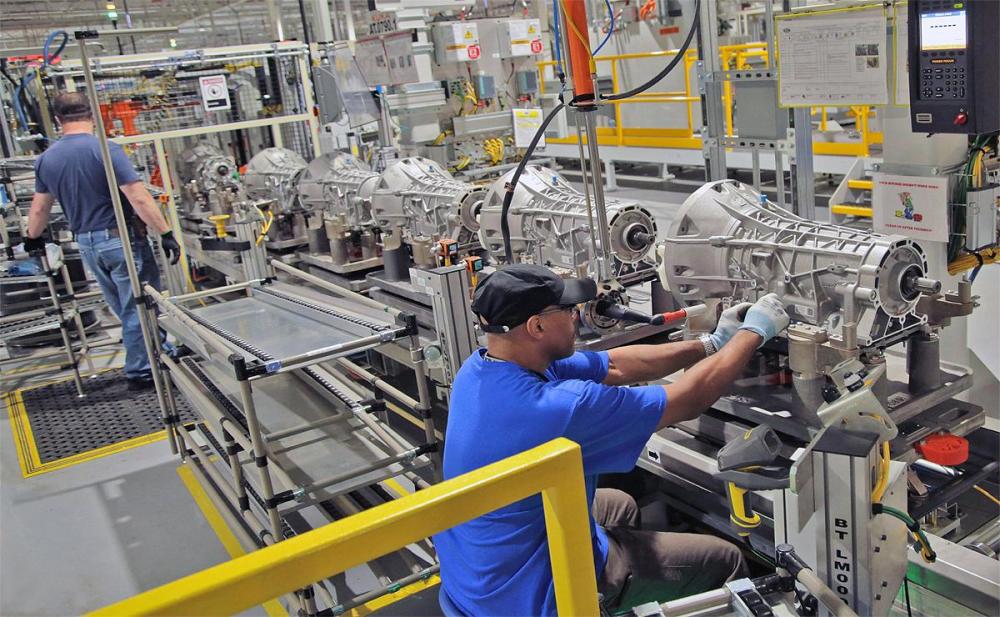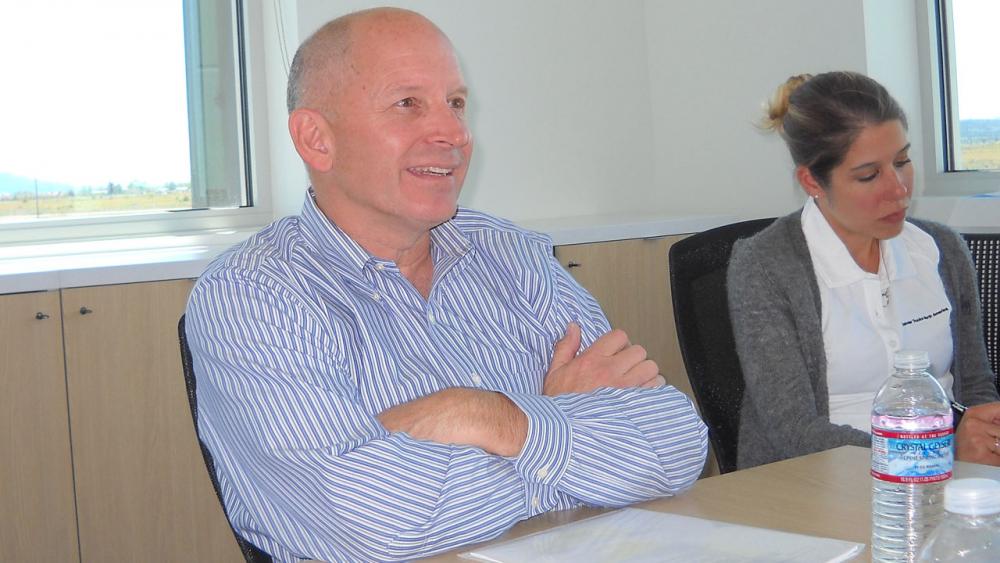
kscarbel2
Moderator-
Posts
17,893 -
Joined
-
Days Won
86
Content Type
Profiles
Forums
Gallery
Events
Blogs
BMT Wiki
Collections
Store
Everything posted by kscarbel2
-
GM to pull of out India market, sell South Africa plant
kscarbel2 replied to kscarbel2's topic in Odds and Ends
Isuzu's Business in South Africa Isuzu Press Release / May 18, 2017 Plan to make ITSA (Isuzu Truck South Africa) become Isuzu's wholly-owned subsidiary and LCV business completely controlled by Isuzu Isuzu Motors Limited (headquartered in Shinagawa, Tokyo and headed by Masanori Katayama, President and Representative Director, hereinafter called "Isuzu") and General Motors Company (headquartered in Detroit, the U.S.A. and headed by Mary Barra, Chairman and CEO, hereinafter called "GM") reached an agreement under which GM will transfer the pickup truck business of General Motors South Africa (hereinafter called "GMSA") to Isuzu Truck South Africa (Pty) Limited (hereinafter called "ITSA") in order for Isuzu to reinforce its commercial vehicle and pickup truck business in the South African market. Before the business transfer, Isuzu will purchase from GMSA a 30% equity stake in ITSA, which assembles and distributes Isuzu commercial vehicles, whereby Isuzu will transform the company into its wholly-owned subsidiary with a new company name of "ISUZU MOTORS SOUTH AFRICA (Tentative)". Isuzu will further reinforce sales, marketing and after-sales activities for commercial vehicles and pickup trucks to establish a foundation for sustainable, long-term business growth in the South African market. Outline of the company Company name ISUZU MOTORS SOUTH AFRICA (tentative) Change of company name Planned in June 2017 Location Johannesburg, South Africa Representative Hiroaki Sugawara Shareholder Isuzu Motors Limited (100%) Description of Business Assembly, sales and after-sales of Isuzu commercial vehicles and pickup trucks for South Africa and surrounding countries *The assembly, sales and after-sales of pickup trucks will start in or after January 2018. Capital 80 million South African Rand (about 650 million Yen) -
Volvo says to start assembling trucks in Kenya
kscarbel2 replied to kscarbel2's topic in Trucking News
Volvo to set up Sh2.5b assembly plant in Mombasa The Standard / May 19. 2017 Swedish truckmaker Volvo plans to set up a Sh2.5 billion vehicle assembly plant in Kenya’s coastal city of Mombasa. Volvo said the factory would be ready for commissioning in early 2018 and would have a capacity to produce 500 units, which would be scaled up over time to reach 2,000 units. Senior Volvo management said yesterday the plant would also serve the region. -
Reuters Africa / May 18, 2017 NAIROBI - Swedish truck maker AB Volvo is to start assembling vehicles in Kenya, part of a series of investments aimed at boosting the company's presence in the region, the company said on Thursday. The East African nation undermined what was a thriving local assembly industry in the 1990s with policies that encouraged cheap secondhand imports. It is now seeking to attract manufacturers back to help create jobs and support growth. Volvo is only the latest vehicle maker to announce plans in recent months to start assembling locally, following moves by Volkswagen, PSA Peugeot and CNH Industrial's Iveco. Volvo will also open an office in Kenya to serve East Africa, open 20 workshops around the region and a parts warehouse, it said in a statement. The company said it was partnering with local firm NECST in the plan, which will create about 300 direct jobs. "There is a significant potential for the premium truck business as regional economies grow, infrastructure investments expand and the business environment remains investment friendly," Claes Nilsson, president of Volvo Trucks, said in the statement.
-
Transport Engineer / May 19, 2017 Concrete supplier Trenchcon has taken delivery of a Volvo FE low-entry cab (LEC) 6x2 rigid for truckmixer applications – the first vehicle of its type to enter service in the UK. The operator needed a specialist 6m³ mixer for work in inner London, as managing director Ronan Byrne explains: “With the Volvo FE LEC, we believe that we are paving the way for a new type of construction truck for use in the urban environment.” Safety was top of the agenda when it came to vehicle selection, he adds: “The greatly enhanced direct vision afforded the driver – which is aided by his sitting about 400mm lower in this truck compared to a standard six-wheel mixer – we believe brings the percentage chance of harm to such as cyclists and pedestrians, down by a significant amount.” Supplied by Volvo Truck and Bus Centre London, at Enfield, the new addition has a 320bhp engine, coupled to a direct top I-Shift automated gearbox and a single reduction rear axle, and is equipped with a CIFA truck mixer body, by Wilcox, and a Brigade four-camera safety system. The FE LEC also features air suspension on all three axles and a hydraulic steered tag-axle. The safety cab features two step entry and a lowered window in the nearside door to increase visibility for the driver. “The type of work we do means that the FE LEC doesn’t need to go off road. When we spec’ed it up, we chose Volvo for the best quality and the fact that this truck is top-of-the-range and entirely suited to our needs,” says Byrne. “We needed the rear-steer lift axle for maneuverability and the I-Shift automated gearbox as the best solution available to help the driver manage deliveries through the constant stop-start heavy traffic. It’s the first truck of its kind for Volvo and I think that we will see many more operators opting for this type of mixer in London.” .
-
Transport Engineer / May 16, 2017 Haulage firm Revis of York has taken delivery of 25 Volvo FH 6x2 tractors with lightweight mid-lift axles – the first of a 35-unit order. The factory-fit axles were key to the decision, says the operator, as is the Volvo Gold R&M arrangement through dealer Crossroads Truck and Bus. The latest additions to the Revis fleet all have 500bhp engines and Globetrotter cabs. They are supplied on a three-year contract hire and are transporting bagged fertiliser to farms across the UK. “This deal with the Gold R&M agreement means we know where we are,” says director John Revis. He also rates the service from dealer Crossroads: “We’re delighted with the support we receive and are especially appreciative of the service whereby the trucks are collected on Friday evening and returned to us at Saturday lunchtime. We don’t lose a moment’s uptime and our six-weekly inspections, servicing and any repairs are simply not something we really need to think about.” The new trucks are expected to cover 160,000km a year and are on the road five days a week. “Running at 44-tonne most of the time, our operation is weight critical and the new axles really help us in this respect,” adds Revis. With the vehicles operating on anything from motorways to farm tracks, vehicle robustness and versatility is a must: “The farm tracks can be a big ask, but the new Volvo FH 6x2 tractor units are just perfect across all the conditions we face,” he says. “The I-Shift is far and away the market-leading automated gearbox and personally, I can’t see it being knocked off its perch anytime soon.” .
-
GM to pull of out India market, sell South Africa plant
kscarbel2 replied to kscarbel2's topic in Odds and Ends
Engineering News / May 19, 2017 The decision by General Motors to pull out of South Africa will “have negative consequences on component suppliers to the company’s existing Chevrolet assembly lines”, says South Africa’s National Association of Automotive Component and Allied Manufacturers (NAACAM) executive director Renai Moothilal. “We are obviously concerned at the announcement that General Motors will be stopping the production and sale of its vehicles in South Africa.” Moothilal said on Friday that Naacam did not yet know how many component suppliers would be affected by GM’s shock decision, announced on Thursday. The decision would see GM South Africa (GMSA) cease Chevrolet production and sales in South Africa by the end of 2017. Isuzu KB one-ton and Isuzu truck production would continue, under the Isuzu Motors South Africa (IMSA) banner. Isuzu Motors announced on Thursday that it would acquire GMSA’s Port Elizabeth plant from GM, to form IMSA. Isuzu assembly at GMSA made up around 50% of production at the Port Elizabeth plant. GMSA total production was well in excess of 2 000 units a month, on average. Moothilal added that Isuzu Motors’ announcement at least offered a “silver lining” to GM’s decision to depart South Africa. “We view this as a level of confidence shown in South Africa as a manufacturing destination. We look forward to working with Isuzu to find ways to optimise the use of South African suppliers.” Moothilal added that it was Naacam’s understanding that GM exited South Africa “on the back of a weak domestic sales outlook, and a general reprioritisation of markets in terms of its global strategy. “At the same time, the company announced its exit from India. Thus the decision seems to be more GM centric. However, we remain of the view that a flourishing domestic and regional market is vital to the long-term sustainability of the auto manufacturing sector.” GM also announced on Thursday that it would cease Chevrolet sales in India by the end of 2017. However, its plant at Talegaon would continue as an export hub for a number of markets abroad. The group added that Isuzu Motors would also acquire its 57.7% shareholding in GM East Africa, assuming management control. GM would also withdraw sales of the Chevrolet brand from the East African market. -
DAF reveals the new DAF CF and XF - Pure Excellence
kscarbel2 replied to kscarbel2's topic in Trucking News
Good review, DAF impresses. Note the comment at 4:41 on 2021-2022.......50cm longer cab noses. -
DAF reveals the new DAF CF and XF - Pure Excellence
kscarbel2 replied to kscarbel2's topic in Trucking News
Commercial Motor TV - sponsored by DAF Trucks / May 18, 2017 . -
Commercial Motor TV - sponsored by DAF Trucks / May 18, 2017 .
-
Scania Group Press Release / May 19, 2017 Felix Jacoby has enthusiastically embraced Scania for more than three decades since he first drove what he characterises as the ‘wild’ Scania 141. “There are many reasons to get excited about trucks with the griffin in the symbol. For some, it is important facts such as the highest torque, perfect operation or high resale value that count, while for others it is an emotional attachment to a truly unique brand.” For all of these Scania fans, Jacoby has over the past nine years published the annual Scania Jahrbuch in German with interesting stories portraying Scania owners and their vehicles. This year is no exception with the difference that he now together with associates has founded his own publishing company. This year’s edition has also, for the first time, been published in the English-language version ‘International Book of Scania Friends’. “I’m simply a freelance writer who is passionate about trucks,” says Jacoby. “You have to love trucks but it’s also very much about the people. The people involved with trucks are as much an attraction as the vehicles.” In addition to an overview of the new generation truck, Jacoby has collected 21 Scania stories from ten European countries. In Switzerland, for example, he talks to a group of three 3-series enthusiasts, he follows an Austrian driver in route to Sicily, meets up with Danish V8-driver Kenneth Ørnstedt and explains why Greek driver Nikos Katernis takes special care of his Scania 143. “I like all the stories, they’re all different in a good way,” says Jacoby. “The people involved in this business are all so wonderfully nice.” He has been writing about trucks since 1991 and combines work on the annual publication with stories for the leading German trade publication Fernfahrer. During his travels, he connects with truck owners and drivers. He regrets that in some respects, the traditional driver is slowly becoming something of the past. “It’s nice to keep the romantic idea of truck driving alive and we still have many old-school drivers. But they earn just half of what they did 20 years ago and our readership has fallen to half in that time.” In many European countries, transport companies are experiencing major problems in attracting drivers. “That is part of the idea with this book, to attract young people to the profession. We have huge truck festivals in Europe with many young people. So there is some hope. And many are interested in trucks even if they don’t work as drivers.” Jacoby has already started working on the 2018 edition of Scania Friends. “I love writing truck stories. It doesn’t generate huge profits but it’s a very nice life.” .
-
Trailer Control – a new service in Scania Fleet Management
kscarbel2 posted a topic in Trucking News
Scania Group Press Release / May 18, 2017 Scania Fleet Management is now being further enhanced with trailer monitoring, Scania Trailer Control. It gives transport operators the possibility to fully integrate crucial information on position and in-trailer temperature with opportunities for tracking through the Scania Fleet Management system. In the coming months, Scania will add more vital trailer information on decisive factors such as axle weight, tyre pressure and braking faults. Scania Trailer Control is being developed in partnership with software supplier Kasasi. At present, data can be collected from the embedded telematics systems of approximately 35 manufacturers and displayed in Scania Fleet Management. This tool enables transport companies to monitor vehicles with services such as vehicle and driver performance indicators, positioning and route planning. Scania has identified temperature controlled transports as the segment where Scania Trailer Control will deliver most value for customers. “For these companies maintaining the accurate temperature throughout the transport operation is essential,” says Mattias Lundholm, Vice President, Connected Services and Solutions at Scania. “We can now provide them with immediate access to this vitally important information in the same system as they already use the many other critical factors that are needed to operate an effective and profitable transport business.” In addition to trailer data, Scania will also start integrating truck body information into Scania Fleet Management. “The aim is that the system will comprehensively feature all the information that transporters require for their daily operations.” . -
MAN Truck & Bus Press Release / May 18, 2017 MAN extends warranty for MAN Genuine Parts to two years // New warranty also covers repairs carried out by MAN, including any MAN Genuine Parts installed The extended warranty applies to all repairs carried out in MAN service centres from 2017 onwards, including any MAN Genuine Parts, MAN Genuine Parts ecoline and MAN Genuine Accessories installed as part of the repair work. In addition, the two-year warranty covers any service work connected with the fitting of spare parts. MAN Genuine Parts MAN Genuine Parts are manufactured and tested in accordance with strict quality standards and will win you over thanks to their high level or reliability and cost efficiency. Not forgetting the quick availability of spare parts, which forms an important pillar of the MAN spare part service. On average, over 8000 genuine parts are available to hand in the MAN service centres, including for older models and speciality vehicles, to keep downtimes as short as possible in the event of damage. 95 percent of all speciality parts, which are not immediately available, are delivered to the workshop overnight via the European Logic Center (ELC), which has been established by MAN. MAN Genuine Parts ecoline MAN Genuine Parts ecoline are replacement parts that are fully remanufactured to MAN Genuine Parts standards by MAN, the original manufacturer (OES) or by an external service provider. Extensive remanufacturing ensures that the quality of the MAN Genuine Parts ecoline matches that of a new MAN GenuinePart. In particular, this ensures that the upkeep of older vehicles can be carried out at fair market value. Just like new MAN Genuine Parts, MAN Genuine Parts ecoline are also available at all MAN service outlet and likewise come with the new 24-month spare part warranty. Salzgitter: central warehouse for MAN spare parts logistics The MAN plant in Salzgitter holds a key position in spare parts logistics. In May 2016, the Logistics Center in Salzgitter was extended with the third construction phase, increasing its storage space by 60,000 square metres to a total of 172,000 square metres. As part of the restructuring of the key competences within the MAN Production Truck (PT) network, the central spare parts location was entirely moved from Dachau to Salzgitter. To ensure a seamless transition of the business, central replacement parts business was relocated from Dachau to Salzgitter gradually, as the construction work progressed. The extension means that the Logistics Center will, from now on, be the sole central warehouse for MAN spare parts logistics. This will reduce the complexity of the logistics process considerably and will make it possible to further optimise spare parts logistics at MAN. .
-
Kenworth Truck Co. Press Release / May 22, 2017 Dedicated Carrier also Sees Half MPG Improvement in Fuel Economy PHILLIPSBURG, New Jersey – Howard Sodano abides by the “Golden Rule.” Do unto others as you would have them do unto you. It’s been his mantra since starting his trucking company – HRS Transport – more than 30 years ago. “I started with one truck at the age of 25, hauling cheese from New Jersey to the Midwest,” Sodano recalled. “I had learned the intricacies of the trucking industry as the operations manager for a small fleet, and I used to drive local loads for my grandfather. So, I decided that when I hired drivers, I’d treat them the way I’d want to be treated. And that includes driving the best trucks.” Sodano has grown his fleet to 36 trucks as a dedicated carrier to a health and beauty aids company. He landed the business after a chance meeting with the traffic manager of the company, who asked Sodano if he could run a few loads each week with his truck. “That was in 1985,” said Sodano. “I gave up the cheese run and decided to put my eggs in this basket. And, it’s paid off as I’ve grown with that company, becoming a supply chain partner, not just another trucking company.” In 2013, Sodano began the transition to the Kenworth T680. He personally test drove and spec’d the T680 to his liking. “We were running the Kenworth T660, but we saw the T680 with the Paccar [DAF] MX as a clear improvement in terms of comfort and performance,” he said. “After the initial two trucks were in our fleet and doing great, we decided to move all the way forward with the T680 and when the T660s aged out (HRS has a trade cycle of less than three years) we replaced them with T680s.” Sodano spec’s the T680 with 76-inch sleepers to the nines. And, just as importantly, the company’s annual fuel costs have come down by nearly $3,000 per truck, thanks to the aerodynamics of the T680, coupled with the MX-13 engine’s fuel-sipping performance. The engine is rated at 500 horsepower and is driven through a 13-speed Fuller transmission. The T680/MX combo is getting a half mile per gallon improvement* in fuel economy over the performance of his previous combination. HRS Transport has a driver turnover rate of less than 20 percent, thanks to Sodano’s “driver-first” mentality. “I would never put a driver in a truck that I didn’t want to drive myself,” he said. “Plus, I still drive on occasion – I never want to give that up. I know for a fact there is less fatigue in driving the T680. The truck is so quiet; it pulls better and drives nicer. At the end of the day, you’re not as fatigued.” Sodano, who drives a BMW with seats that heat and cool, was quick to bring that option to his T680. “I love that in my car, so I knew I wanted it in our trucks too,” he said. “The premium leather seats (GT703) are just great and to be able to have the heat warm you up in the winter, or cool you down in the summer, just adds in making for a comfortable ride.” The T680s feature a 180-degree swivel passenger seat and swivel table, which maximizes the driver’s living space by combining the cab and sleeper into a large studio. The Driver’s Studio also features ample storage space, including a full-size closet for hanging clothes, multiple storage drawers, and a large storage space under the lower bunk. Sodano specs a refrigerator, Sirius radio and the Kenworth Idle Management System (KIMS) for engine-off heating and cooling, in each of his T680s. “I just love the KIMS option,” he said. “We wanted a low-maintenance APU and this is it. In the winter our idle rate is about 7 percent. In the summer it’s under 10 – and we run into Florida, so that says something.” Sodano said drivers can expect six to 10 hours of continuous cooling in the T680 – even in the hot Florida sun. “Once we shut down the truck, at say 70 degrees, the Kenworth system will maintain that temperature. We’re about to hit our third summer with the system and the system has required minimal maintenance. Our drivers love it.” Even though HRS is a dedicated carrier, it doesn’t mean it can skimp on performance. “We’re tested every day and graded every week on performance,” said Sodano. “We have to continually justify our existence and that’s the way it should be. Over the last two weeks we had a 100 percent on-time delivery rate. And overall, we’re in the high 90s.” Helping HRS even further is Kenworth TruckTech+, which came with a complimentary two-year subscription with the T680s. TruckTech+ is a remote diagnostic tool imbedded in the T680. It provides instant notifications to the fleet manager, via email, about an issue with a truck – interpreting the fault code into an actionable item, allowing real-time decision making. “I plan to renew the subscription when the time comes. It’s that valuable to me,” Sodano said. “We haven’t gotten many alerts, but when they come in, we’ll call the driver and go over the situation. In most cases, the alert hasn’t even come up in the truck yet, so we’re telling the driver he has an issue – such as low DEF [AdBlue] – even before he knows it. It’s amazing. The bottom line benefit is we now know the condition of the truck, and the severity of the problem, and can make good decisions based on that information. It’s powerful stuff and only helps us in keeping our trucks on the road.” .
-
Overdrive / May 19, 2017 Following a rise in public protests in recent years, especially around the election and inauguration of President Donald Trump, several states have passed or attempted to pass legislation to curb protests that spill onto highways and impede traffic. Tennessee and South Dakota have both passed laws pertaining to blocking highways with protests, while Iowa, North Carolina, Washington and Massachusetts each have legislation pending. Mississippi and Florida had legislation die before it reached the governors’ desks. Legislation in Minnesota and Arkansas has been vetoed by the respective governors. Tennessee’s law increases fines to anyone who intentionally blocks a highway, street, railway and more. The new fine for this Class C misdemeanor is $50. The new law also states that if the person is obstructing an emergency vehicle from accessing the roadway, the fine is $200. In South Dakota, the new law signed by Gov. Dennis Daugaard in March bans blocking highways and interfering with traffic. The law also allows the state’s Department of Transportation to set up temporary no-parking zones. Sitting at the subcommittee level in the Iowa senate since February is a bill that would ban people from intentionally blocking traffic on highways with speed limits of 55 mph or higher. Violators would be subject to up to five years in prison and a fine up to $7,500. A proposed North Carolina’s bill states that a driver “exercising due care” who injures a protester blocking traffic is immune from civil penalty for the injury. The bill clarifies that a driver who hits a protester on purpose will be subject to civil liability. The bill is in a senate committee. In Washington state, a bill would levy additional jail time to someone who was convicted of “economic disruption” while committing a criminal offense. For a misdemeanor offense, 60 days would be added to the sentence; for a gross misdemeanor, six months; and a felony offense, 12 months. The bill defines “economic disruption” to include the blocking of trucks and more. A Massachusetts bill states that anyone who blocks traffic on a road with a speed limit of 30 mph or higher is subject to up to 10 years in prison, up to a $1,000 fine, as well as imprisonment for up to two-and-a-half years. The bill sits with the House Judiciary Committee. Earlier this month, Minnesota Gov. Mark Dayton vetoed a public safety bill that would have, in part, increased fines for those who block highways and roadways with protests. State law currently allows up to 90 days in jail and a $1,000 fine. The new bill would have increased the jail time to up to one year and increased the fine to $3,000. In Arkansas, Gov. Asa Hutchinson vetoed a bill that would have made “mass picketing” a Class A misdemeanor. Bills in Mississippi and Florida died in the legislative process. Mississippi’s bill would have made the penalty for intentionally blocking a highway up to 5 years in prison and a $10,000 fine. Florida’s proposed bill would have made the intentional obstruction of a public road during a protest a second-degree misdemeanor.
-
- 1
-

-
Mack predicts Class 8 market will stay strong
kscarbel2 replied to kscarbel2's topic in Trucking News
Mack Thinks Class 8 Market Will Stay Strong Truck-Body Builders / May 19, 2017 While Mack Trucks expects total Class 8 production volume will reach 215,000 units for 2017 – mirroring projections by other industry analysts – the OEM also believes that “underlying demand” for heavy trucks is stronger than many think, meaning that the market should exit 2017 stronger than when it entered the year, with manufacturers ramping up to build more equipment as time goes on. “The market is good,” explained Dennis Slagle, Mack’s president and executive vice president with its parent company, the Volvo Group. “We’ve come out of a long correction in the long-haul sleeper and daycab segments, while vocational sales continued to do well. That played to Mack’s strengths so we had a good first quarter this year.” High inventory levels were one reason for that “correction,” he said, with virtually all of it comprised of on-highway Class 8 trucks. But inventory peaked in October 2015 and has now been reduced to what Slagle called “a healthy level” and that OEMs have now positioned their factories to build to customer demand. “We’re looking at some sort of ramp [up] to adjust to market conditions,” he emphasized. “Underlying demand is healthier than last year. We also think the business-friendly environment of the Trump administration will help if he gets through the mismanagement of the [federal] bureaucracy and gets back on track to focusing on the economy.” Jonathan Randall, Mack’s senior vice president of sales, added that Mack grew its market share in every one of its segments last year – on-highway, regional, vocational, etc. – for a total gain of about one percentage point, which, “by all accounts is putting Mack on a roll.” He noted that the OEM plans to expand on its “growing foothold” in the long-haul market with a product announcement slated for later this year, alongside plans to keep growing its regional business while maintaining its position in the vocational segment. “We see the same [growth] trends we experienced last year occurring this year,” Randall pointed out. Part of that growth trend includes faster adoption of Mack’s proprietary mDrive automated mechanical transmission (AMT), stressed Roy Horton, Mack’s director of product strategy. He said the mDrive is being spec’d in 80% of the OEM’s Pinnacle axle back highway models, 60% of its Pinnacle axle forward models, and 20% of its Granite conventional trucks – with Randall noting that the backlog for mDrive gearboxes spec’d in Granite vocational models is now at 30% for 2017. Overall, Horton said AMTs and fully-automatic transmissions are now being spec’d across 80% or more of all Mack’s models, with only 15% to 20% of orders requesting manual transmissions. “We sell more Eaton manual transmissions on the highway side of our business, while our proprietary Maxitorque [manual] is the predominate selection on the vocational side,” he added. Other trends Mack touched on during its Charleston conference included: Slagle believes demand for trucks that run on liquid natural gas or LNG “is dying” while demand for compressed natural gas or CNG-powered trucks “is staying pretty steady.” While that is promising, he added that diesel remains a “foundational fuel” as it is powerful, clean, and fuels 3.5 million vehicles in the U.S. served by 60,000 filling stations across the country. “Diesel is going to be with us for a while,” he stressed. Horton noted that demand for engine displacements greater than 13 liters is declining rapidly across the Class 8 segment. In 2009, he said, 56% of Class 8 trucks had engines with displacements greater than 13 liters; by 2016 that dropped to 40%. John Walsh, Mack’s vice president of global marketing and brand management, noted that the difficulty of finding drivers remains an “underlying theme” among the OEMs customers. “The hard part is putting into numbers just how many more trucks the industry would sell if it had enough drivers,” he said. Randall noted that OEMs remain supportive of Phase 2 greenhouse gas (GHG) rules and that Mack will not change its GHG-based product plans going forward. “They will help us meet customer demand for more fuel economy,” he explained. However, Slagle stressed that it remains “very challenging” to get Class 8 trucks to meet the GHG standards. “Make no mistake, this is costing a lot of money and the end user must embrace that as well,” he pointed out. David Pardue, Mack’s vice president for connected vehicles and uptime services, said more than 55,000 Mack trucks are now on the road equipped with the OEM’s GuardDog Connect telematics system. Even legacy models can now be upgraded with a similar telematics function via its new partnership with Geotab. Pardue added that 91 dealers now certified as “uptime centers.” At those locations, repair diagnostic times are down an average of 70%, repair times in total are down 21%, shop efficiency is up 24% and “check in” time for repairs is down by over 40 minutes. -
Mack predicts Class 8 market will stay strong
kscarbel2 replied to kscarbel2's topic in Trucking News
Mack Trucks' Slagle is Bullish on Class 8 Truck Market Heavy Duty Trucking / May 18, 2017 CHARLESTON, S.C. The head of Mack Trucks regards the state of the heavy-duty truck market as solid. “Everyone in the industry has succeeded in bringing inventory down to safe levels,” Dennis Slagle, president of Mack Trucks and Volvo Group executive vice president, said at a May 18 media briefing here. “[Class 8] inventory industry-wide is now at a level that we can look forward to factories building for demand,” he continued. Slagle said the upshot is that this year Mack is forecasting North American truck sales of 215,000 units. While he allowed that would be down from last year’s total of 243,000, he said it reflects “the industry looking to adjust to true market conditions.” What's more, he said that "the underlying demand is healthier now than what we saw last year, so we see the market leaving 2017 in a stronger way.” Along with the inventory correction, Slagle said he’s pinning hope on President Trump holding true to his promise to foster policies favored by business interests. “We think, like everyone else, that the business-friendly environment of the Trump Administration— if he will get through the mismanagement he’s done of the bureaucracy— could be helpful [to trucking], such as with infrastructure [spending] and reducing regulations.” Slagle also hit on the importance of boosting customer uptime for the OEM. “Our greater focus will continue on the service side of the business,” he said, noting that when he entered the truck side of the business, coming from Volvo Construction Equipment, he was “surprised we were not talking as much about service as other things, such as fuel economy.” He said Mack has in recent years “taken steps to really help customers manage and increase uptime,” including working “to harvest opportunities not just with the trucks we sell now, but also over the complete lifecycle of trucks, including reman activities and for used trucks through our ownership of Arrow Truck Sales.” Remarking on the GHG rules promulgated by the EPA as well as those put forth by the European Union, Slagle said it will be “very challenging” to implement the stricter standards globally. “Make no mistake,” he said, “this is costing a lot of money and the end user must embrace it as well.” Slagle also noted that interest in LNG power is drying up while demand for CNG-fueled trucks remains “pretty steady.” He added that “diesel is going to be with us for a while.” “Strong tail winds are driving the market and Mack,” said Jonathan Randall, senior vice president of sales. He reported that in 2015, Mack grew share in each of its on-highway and vocational market segments. Those boosts amounted to a total gain on about one percentage point, which Randall said “by all accounts has Mack on a roll.” And he said the OEM sees “the same trends we experienced last year occurring this year,” which will help drive growth. Randall gave a very slight sneak preview, advising that later this year Mack will reveal “something that will help us” in the on-highway market. He added that the company remains committed to maintaining its strong position in vocational sales as well as growing its business with regional fleets. John Walsh, vice president of global marketing and brand management, noted that the driver shortage remains a critical factor holding back the over-the-road industry. “We hear all the time that ‘We’d but more trucks if we had more drivers.'" . -
GM to pull of out India market, sell South Africa plant
kscarbel2 replied to kscarbel2's topic in Odds and Ends
No Turning Bakkie: General Motors to End Sales in South Africa and India Car & Driver / May 18, 2017 General Motors will stop selling cars in South Africa and India and halt a large chunk of its local manufacturing, the company said Thursday. Chevrolet will exit both markets by the year’s end. Both of GM’s Indian assembly plants will remain online. The Talegaon plant will produce cars exclusively for export to Mexico, Central America, and South America. The Halol plant will be sold to GM’s Chinese joint venture partner, SAIC, after GM announced two years ago that it would shutter the plant. GM stopped all production there just three weeks earlier, according to The Times of India. Aside from building global Chevrolet models like the Cruze and Spark, the Indian plants crank out several rebadged Chinese models (Sail, Tavera, Enjoy) and the newest version of the Captiva. The Talegaon plant has a maximum capacity of 165,000 cars per year. Isuzu is taking over GM’s position in South Africa. The Struandale plant, which builds the Spark and the compact Utility Bakkie (the South African term for pickup truck), will be sold to Isuzu along with GM’s 30 percent stake in the Isuzu truck plant at Kempston Road. Three Chevrolet models (Cruze, Captiva, Trailblazer) no longer will be imported. Opel’s five-model lineup may remain in the country, GM said, as it continues discussions with PSA Peugeot Citroën, which two months ago agreed to purchase Opel and Vauxhal GM also said it will pull out of the East African region by selling a 57.7 percent stake to Isuzu and trimming an unspecified number of employees in Singapore, home to the GM International Operations division that oversees all foreign markets save for South America and China. GM’s consumer websites for both India and South Africa redirected traffic to a single page detailing the pullout in their respective markets. The company said it will keep “around 90” of the 137 Chevrolet and Opel dealers open in South Africa to sell Isuzu’s light commercial trucks and honor all warranties and service. GM did not specify how many dealers it would close in India but said they would “transition to authorized service outlets” and be offered compensation. The Chevrolet brand was only introduced in India in 2003 after seven years of local GM production. While the 2500-plus employees at the Talegaon plant are likely to be unaffected—in March, their union signed a three-year contract—it’s possible GM may reduce or cancel its 2015 promise to invest $1 billion in Indian manufacturing as part of the company’s Global Emerging Market vehicle program designed for low-cost vehicles sold in China and Latin America. At that time, according to Hindu Business Line, GM also said it would double Indian market share to 3 percent by 2020. But current market share for the fiscal year ending March 31 is below 1 percent despite the country’s auto sales rising above three million cars. The cost of complying with India’s first ever crash-test standards, to be enacted later this year, is another major reason for GM’s pullout, which, like many major automakers, often offers obsolete cars without many modern safety or crash technologies in developing countries. Aside from a temporary pullout during apartheid, GM has built cars in South Africa since 1926. But flat returns, a fluctuating rand, and struggling sales have dogged GM’s bottom line. Cadillac pulled out of the country in 2010. In 2016, the entire international division, which includes South Africa, posted a 15 percent yearly drop in sales to 673,499. The company will maintain manufacturing and sales operations in Kenya and Egypt. The cutbacks are part of a broad, long-term sweep by former VW and Volvo exec Stefan Jacoby, who months after taking over the international division in 2013 announced GM would quit Holden manufacturing in Australia and pull Chevrolet from Europe. That same year, he merged two of GM’s separate North Africa and sub-Saharan-Africa divisions together and then merged the new African division with GM’s Middle East division in 2015. Jacoby wasn’t finished, as 2013 also saw GM shut down production in Indonesia, reduce production in Thailand, and reduce sales in Russia to only Cadillac and three high-priced Chevrolet models (Corvette, Camaro, Tahoe). The Saint Petersburg plant currently is idle. GM said it wants to focus on higher-margin vehicles, particularly SUVs and crossovers, in China, the United States, and other countries “where the outlook for growth is very strong.” The company said it will record a $500 million special charge in the second quarter to pay for the wind-downs and expects to save $100 million per year. . -
The pre-CMCAC hoods (up to 1981) and the CMCAC (chassis-mounted charge air cooling) hoods (from 1982, e.g. 1QM5556 and 1QM5638) are different.
-
Question about R/U Model Radiator
kscarbel2 replied to Mdmccurr's topic in Antique and Classic Mack Trucks General Discussion
Mike, when you called your local Mack dealer with the model and serial number (last five digits of the VIN) off the vehicle identification plate on the driver's door and asked about a new radiator (possibly 3MF5296AP2), what did they say? -
Sisu partners to develop hybrid heavy truck powertrain
kscarbel2 replied to kscarbel2's topic in Trucking News
Ted, Sisu builds very good trucks. I trust them to have thought this system through. -
Ford will invest $350 million to build new fwd transmissions Automotive News / May 19, 2017 DETROIT -- Ford Motor Co. on Friday said it's investing $350 million in its Livonia Transmission plant as part of the commitment it made in its 2015 deal with the UAW. The automaker said the investment will support a new transmission for front-wheel-drive vehicles. The move will create or retain 800 jobs. "We remain committed to American manufacturing and investing in our people and facilities," Joe Hinrichs, Ford's president of the Americas, said in a statement. "Even as the industry's largest employer of hourly workers in the United States and biggest producer of American-made vehicles, we believe it is important to continue investing right here in our home market." Ford did not say how many of the 800 jobs would be new, and a spokeswoman said Ford expects the majority to be filled by current Ford workers. It expects to begin adding jobs late this year, with the majority coming next year and in 2019. Ford in its 2015 UAW deal vowed to invest $1.8 billion in the plant and add three new transmissions. Last year, it announced a $1.4 billion investment to make its new 10-speed transmission, which first rolled out on its F-150 and Raptor pickups. Ford said this new transmission, which will increase fuel efficiency, will share some software and design elements with its 10-speed [jointly developed with General Motors]. The plant employs about 1,800 hourly workers. Friday's news comes two days after Ford announced it would cut about 1,400 salaried positions in North America and Asia in a cost-cutting move. .
-
FCA to modify diesel engines to thwart U.S. suit over emissions levels Bloomberg / May 19, 2017 WASHINGTON -- Fiat Chrysler Automobiles filed a proposed fix to about 104,000 diesel engines that the carmaker predicts will resolve negotiations with the Justice Department and other U.S. regulators over emissions levels. The automaker also applied for diesel-vehicle emissions certification Friday for the 2017 Jeep Grand Cherokee SUV and Ram 1500 pickup, according to a statement. Fiat Chrysler is seeking permission from the EPA and the California Air Resources Board (CARB) to sell the SUVs and trucks after updating emissions software calibrations. The filing is the culmination of four months of work with the EPA and CARB after the federal regulator alleged the automaker had installed software in 2014-16 model-year editions of the diesel vehicles that violated clean-air rules. The company plans to make the same modification to the emissions-control software in those model-year vehicles that it’s applied to deploy for 2017 vehicles, if regulators approve. The Justice Department has been preparing to sue FCA if talks fail to resolve differences over the automaker’s alleged violations, two people briefed on the matter said this week. Fiat said in its statement it “believes that these actions should help facilitate a prompt resolution” with the Justice Department. An EPA spokeswoman refused to comment, citing the agency’s policy to avoid discussing the certification status of vehicles not yet approved for sale. Wyn Hornbuckle, a Justice Department spokesman, refused to comment. Fiat Chrysler’s U.S.-listed shares rose 0.3 percent to close at $10.50 in New York. The stock has climbed 18 percent this year. U.S. regulators have put greater scrutiny on diesel models after Volkswagen AG admitted in 2015 to using defeat devices that turned on emissions controls to pass tests but turned them off during driving. Daimler AG’s Mercedes-Benz this month halted efforts to get approval for 2017 diesel versions of models including the C-class sedan and GLE SUV, citing an arduous certification process that wasn’t justified given demand for the vehicles. FCA CEO Sergio Marchionne denied the EPA’s allegations in January and said last month Fiat Chrysler may have unintentionally made mistakes.
-
DTNA president Roger Nielsen does not expect NAFTA, GHG changes
kscarbel2 replied to kscarbel2's topic in Trucking News
Daimler chief unfazed by NAFTA talk Today’s Trucking / May 19, 2017 MADRAS, OREGON – Roger Nielsen, the recently named president and Chief Executive Officer of Daimler Trucks North America, doesn’t seem concerned by talk about renegotiating the North American Free Trade Agreement – even though its manufacturing footprint includes Mexico. “We’re a global company, and globally we believe in free trade. And we’re prepared to engage everybody and anybody in discussions,” he said during his first media briefing. “I don’t anticipate any major changes in the NAFTA.” The company has reserve manufacturing capacity in the U.S. and Mexico, he noted. The supply chain is also dual-sourced. “They have the ability to source worldwide or source domestically.” Daimler's global presence was recently punctuated when Nielsen’s predecessor, Martin Daum, was promoted to lead Daimler Trucks and Buses worldwide. Then Nielsen received the call that put him in his current role. “I was absolutely in shock,” he says. “I never really thought that would be the next step in my life.” But he earned the role, and there have been several executive promotions at the company since, many of which were set up by Daum. Nielsen himself served as the company’s Chief Operating Officer since 2001. And he clearly likes to keep in close touch with staff and products alike. He often grabs a truck on display in front of the company’s corporate headquarters to head out for lunch. And he makes random calls to the call center to see if the answers align with corporate approaches. Aspects of his previous role will undeniably influence the work he does today. “I bring in a view of being responsible for product quality,” he says. “Quality in the factory is service quality.” But the role of president and Chief Executive Officer is undeniably different. “I now understand my opinion counts,” he says, illustrating the comment by referring to a Tweet he questioned. He just made a passing reference to it, but the next time he went back to read it, it was already gone. Daimler clearly has set its sights on a 40% market share, and it is a leader in on-highway truck sales. But the potential for a bigger market overall is dampened somewhat because major buyers have “fresh fleets”, with average equipment ages under 24 months. “Used truck pricing is not like it was two years ago, three years ago, four years ago,” he adds. Those who have equipment with plenty of miles left are more likely to stick with what they have. Some customers are also holding back purchases as they wait for different configurations of the next-generation Cascadia. That rollout is scheduled to be complete in mid-2018. “We have some great products yet in our pipeline,” he adds, alluding specifically to vocational models that are in the works. “We have engineers who love to design trucks.” Look at the piles of dirt, he said, pointing to the surrounding High Desert Proving Grounds. It needs to be moved. Fuel economy also remains a central focus. “For sure, we are promising better fuel economy year over year,” he says, adding that he’s confident the second phase of Greenhouse Gas emissions standards will remain in place. The tools to meet the cleaner emissions are all technologically viable and doable. Consider the difference realized by Automated Manual Transmissions. About 95% of all new Cascadias come with those. There was a time not long ago when many people thought of that as a niche technology, Nielsen observes. As for Tesla’s plans to introduce and electric Class 8 truck by September? “It’s interesting to watch,” he says, referring to gains in battery power density as well as the cost per kilowatt hour. But there is still the challenge of long-haul drivers who don’t want to stop for frequent charges. “Daimler is the leader in electric vehicles. We’re the leader in battery technology,” he says. “We will be ready when the market is ready, if it ever comes." -
DTNA president Roger Nielsen does not expect NAFTA, GHG changes
kscarbel2 replied to kscarbel2's topic in Trucking News
New DTNA Chief Roger Nielsen Says GHG Rule Will Stick Transport Topics / May 19, 2017 MADRAS, OREGON — Fleet owners should not expect the truck and engine sections of the federal Phase 2 rule on greenhouse gas emissions to change before implementation starts in 2021, said Roger Nielsen, the CEO of Daimler Trucks North America. Speaking to reporters and editors at a company event here May 18, Nielsen gave credit to the Obama administration for developing the complicated rule in a logical fashion. “We did a great job with the previous administration to produce a doable, viable rule within the realm of technological possibilities — and I don’t see that changing,” said Nielsen, who has been CEO of North America’s largest truck maker since April 1. Although the Trump administration has been searching for Obama-era regulations to rescind or modify, Nielsen said GHG Phase 2 lays out an orderly but challenging long-term path to lower carbon dioxide emissions that will be accomplished by building more fuel-efficient trucks. In his first press conference since succeeding Martin Daum as CEO, Nielsen also spoke about North America’s heavy-duty truck sales market and his promotion from chief operating officer. He spoke in conjunction with DTNA’s opening of its new High Desert Proving Grounds test facility. In the Daimler AG first-quarter report released in April, DTNA’s parent company forecast growth in both the world and U.S. economies. Despite that, the prediction for North American Classes 6-8 sales this year was for flat versus 2016 or a continuing dip. While truck makers always welcome an expanding economy, Nielsen said traditional production cycles now are doing more to influence sales. “2015 was a peak for sales, and all of that buying brought down the average ages of trucks for fleets,” Nielsen said, adding that most of those 2105 trucks still are in good shape. Most of the DTNA Freightliners and Western Star trucks traded in now are from 2012 and 2013, he said. When it is time for the 2015s to be traded in, that should boost sales significantly. Nielsen said that refrigerated and flatbed carriers are ordering more now, but the large dry van, truckload segment is not as prosperous. An Oregon native, Nielsen started with DTNA in 1986 and has been chief operating officer since 2001. The executive ladder within Daimler changed earlier this year when Wolfgang Bernhard left suddenly as head of Daimler’s global trucks division. Daum was brought home by Daimler to succeed Bernhard, and one of Daum’s first decisions was to promote Nielsen as his successor. Nielsen, who has a commercial driver license and has been known to drive a Class 8 tractor to his eye doctor, noted a change because of the promotion. “I now understand that my opinion counts,” he said. After observing offhandedly that he didn’t care for a company tweet, “I went back an hour later to look for it, and it was gone.” .
BigMackTrucks.com
BigMackTrucks.com is a support forum for antique, classic and modern Mack Trucks! The forum is owned and maintained by Watt's Truck Center, Inc. an independent, full service Mack dealer. The forums are not affiliated with Mack Trucks, Inc.
Our Vendors and Advertisers
Thank you for your support!


